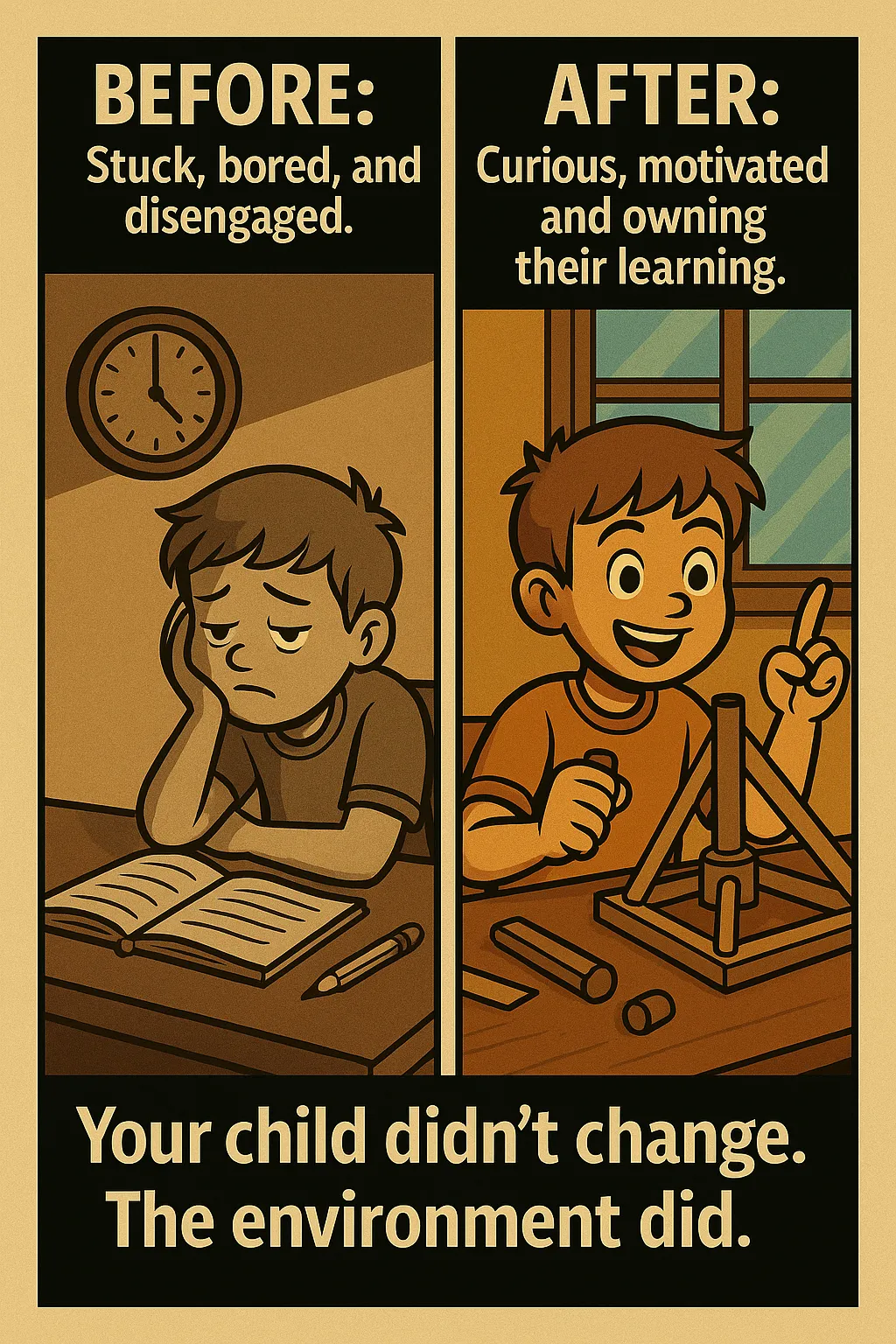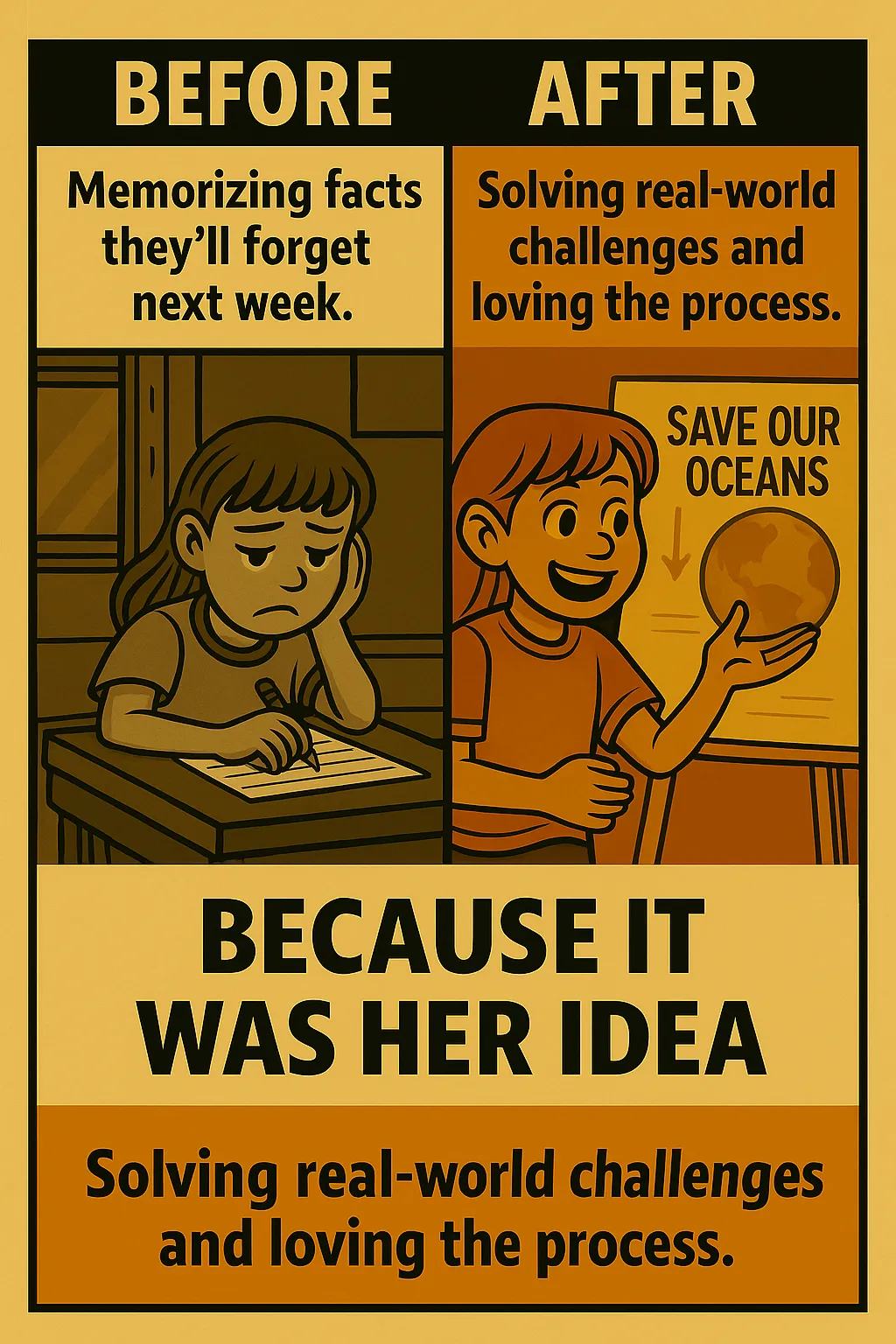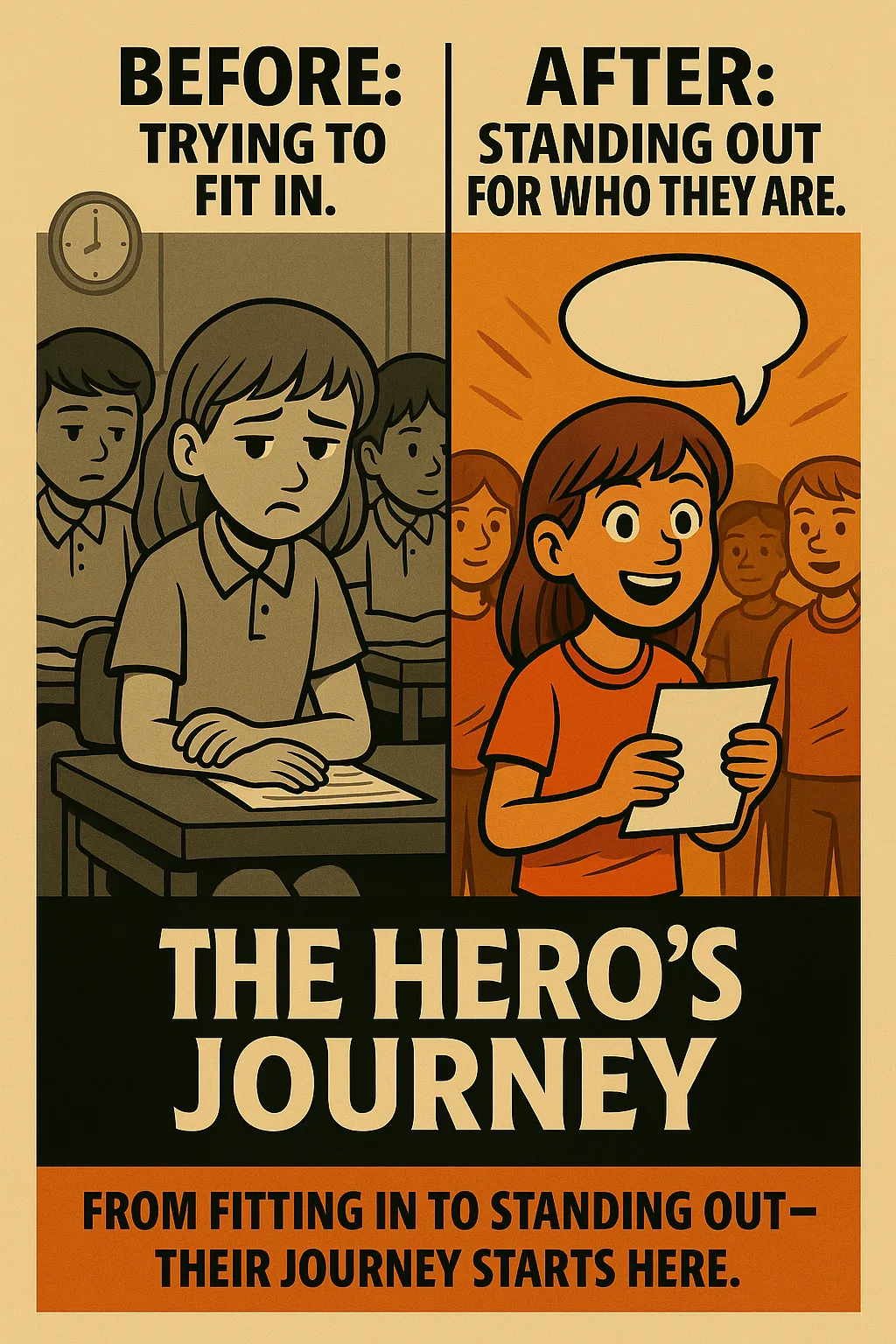Not Just a School
A Launchpad for Lifelong Success
Discover a revolutionary learner-driven model that awakens curiosity, builds grit, and helps Young People fall in love with learning again.
A short, honest guide to help you choose the right education for your child.
Not Just a School
A Launchpad for Lifelong Success
Discover a revolutionary learner-driven model that awakens curiosity, builds grit, and helps Young People fall in love with learning again.
A short, honest guide to help you choose the right education for your child.












What If School Didn’t Just “Work” But Inspired?
This guide will help you see what’s possible and why your instincts have been right all along.
Inside, you’ll discover:
Why your child wasn’t born to fit into someone else’s mold, and how a different learning model can help them discover who they're meant to become.
Why education systems based around uniformity, centralized curriculum, age-based grouping, and the pressure to conform may be slowly killing your child's love of learning, and what to do instead so your child can flourish.
Why today's world needs problem-solvers, creators, communicators, and entrepreneurs (Because your child isn’t meant to follow a one-size-fits-all path).
A quick self-assessment to determine if your child's school is working for them, with a clear comparison of educational models — traditional, private, homeschool, and learner-driven.
How to choose the right school that unlocks your child’s purpose, not just their GPA.
Download
the Free Parent Guide
And take the first step towards igniting a love of learning in your child.

What If School Felt Like a Place Where Your Child Was Truly Seen?
At Quest Academy North Idaho, education isn’t about worksheets and test scores. It’s about awakening purpose, unlocking potential, and helping your child discover who they’re meant to become.



What Happens When Children Take Ownership of Their Learning?
You don’t need a brochure. You need to see it.
We could talk about independence, grit, or purpose.
But nothing compares to watching a child light up with confidence because they own their journey.
These videos aren’t scripted or polished—they’re real moments from real learners discovering who they’re meant to become.
Children launching real businesses before middle school
Learners leading exhibitions and presenting with poise
Goal-setting, peer accountability, and learning through discovery not lectures
A deep sense of purpose, courage, and self-direction
What They Love About Acton
Real Life Skills
I Didn't Do My Homework
Our Mission:
Our mission is to inspire each person who enters our doors to find a calling that will change the world.
Our Beliefs:
We believe each person has a gift that can change the world in a profound way.
We believe in learning to learn, learning to do and learning to be.
We believe in a closely connected family of lifelong learners.
Our Promises:
We promise, through Socratic guiding and experiential learning, to encourage your child to:
Begin a Hero's Journey;
Learn to be a curious, independent, lifelong learner;
Develop a deep respect for economic and political freedoms;
Cherish the arts, wonders of the physical world and the mysteries of life on earth; and
Discover their most precious gifts and learn to use them to serve others.
Our Educational Philosophy:
We believe clear thinking leads to good decisions, good decisions lead to the right habits, the right habits forge character and character determines destiny.
Our Economic Model:
We believe self-directed, peer-to-peer learner-driven communities built by our young Heroes will deliver transformational learning at a cost all parents can afford.
The Philosophy Behind the Freedom
Self-paced learning. No standardized tests. No homework. No busywork.
It might sound radical—but every part of the Quest Academy North Idaho model is designed with purpose.
Want to see what makes Quest Academy North Idaho so different?
Discover how structure, freedom, and learning through discovery come together to create a truly transformative learning experience.

© 2025 Journey-Suite LLC. All rights reserved.